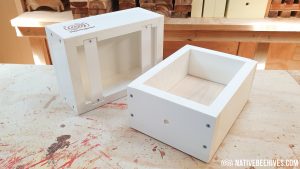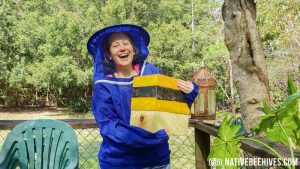
This post follows the progress of three colonies
Although we all want to, we can’t compare the boxes because there’s many variables. You wouldn’t get an accurate result, so we’re not looking for a winner or loser here. People are fairly biased in their views and will interpret data or chart information to suit their view. If you wanted to compare box designs you might need to test 50 of each design in different conditions which is way out of my budget. Hopefully over the next few years I can get a couple of each box design set up with temp probes and then we could make some comparisons. We would need to compare the same boxes against each other and confirm similarities before comparing to other boxes, though we could make general observations, like a lighter colour box should be cooler in full sun.
Possible variables
Colony strength, Probe position, Yard position with different amounts of sun and shade, Different box designs, colour, thickness and densities of wood
You can see the probe is sitting right in the brood area, the bees have built around it. To be picky, colony 1 probe is closer to the center of the brood compared to colony 3 probe. Will that cause a difference in the charts?
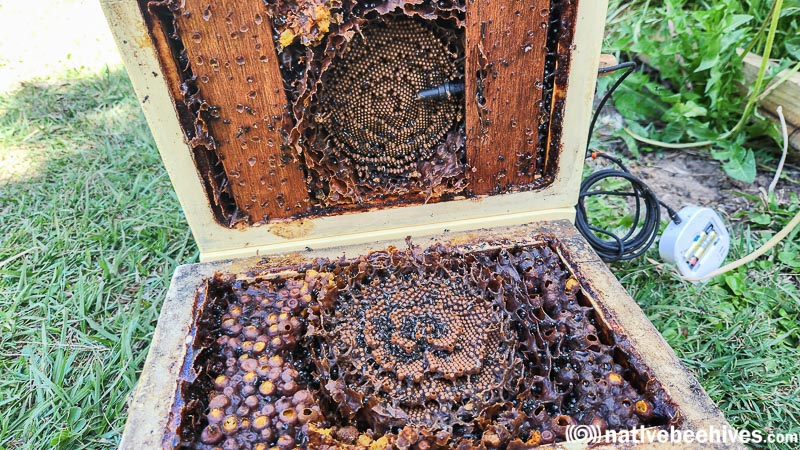


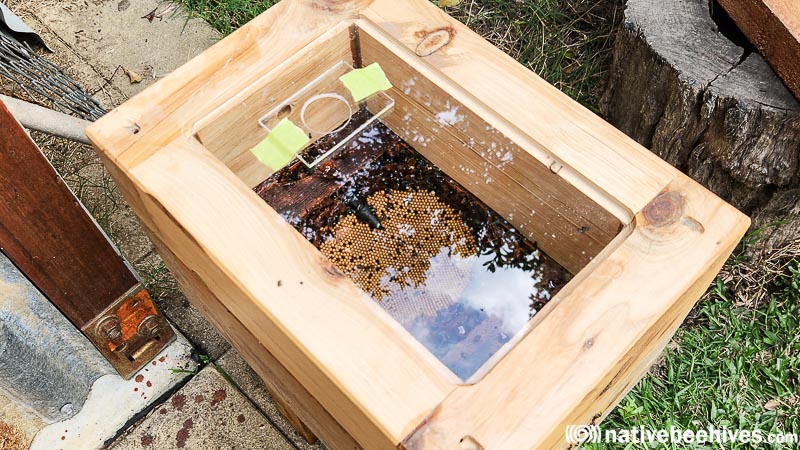

September 2022
So we’re not comparing boxes, for this chart we’ll just call them colony 1, 2, 3 as we’re only looking at the colony brood temperatures and how they recovered after being split. This is over a period of 30 days. The three colonies are in full sun from 7am to 2pm.
General Observations:
- Colony 1 – Yellow line – the big jump was a battery issue – ignore that bit
- Colony 2 – Grey line – Looks like it hasn’t recovered as well as the other two after the split as the temperature is a bit low so i’ll keep an eye on that hive
- Colony 3 – Brown line – Has higher peaks during the day compared to colony 1, but similar low temperatures.
- All colony temperatures are less stable after the splits – more erratic jumps in the lines
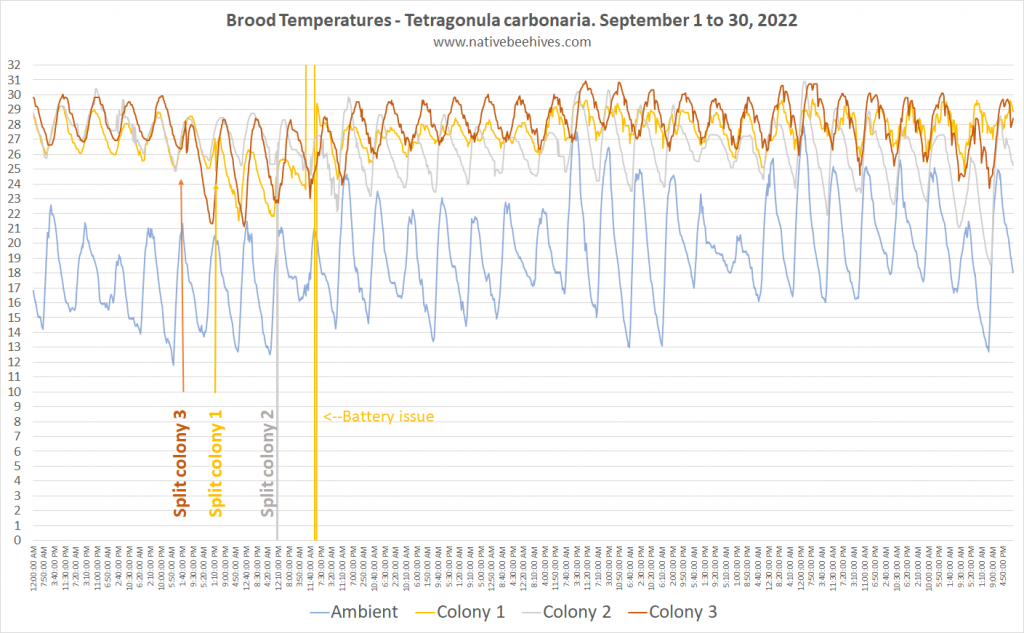
October 2022
Observations:
- Colony 1 – Temperature is more stable than the others
- Colony 2 – may not be re-queened with lower temperatures compared to the others. Monitor for decrease or increase. It’s possible the probe isn’t fully in the brood.
- Colony 3 – Gets cooler and warmer than colony 1, but only by small amounts. The probe position could be slightly different compared to colony 1.
- Pretty hard to draw any conclusions about box design with minor differences in degrees.

October 2022
Colony 2 update – see photo below – I opened the box and check the probe position. There were plenty of bees and the colony looked healthy. The bees had built the brood further to one side and the probe was outside of the involucrum/brood area. I think this shows how easily we could misinterpret the data and we might think the colony is failing or the box design is having an impact on the results.
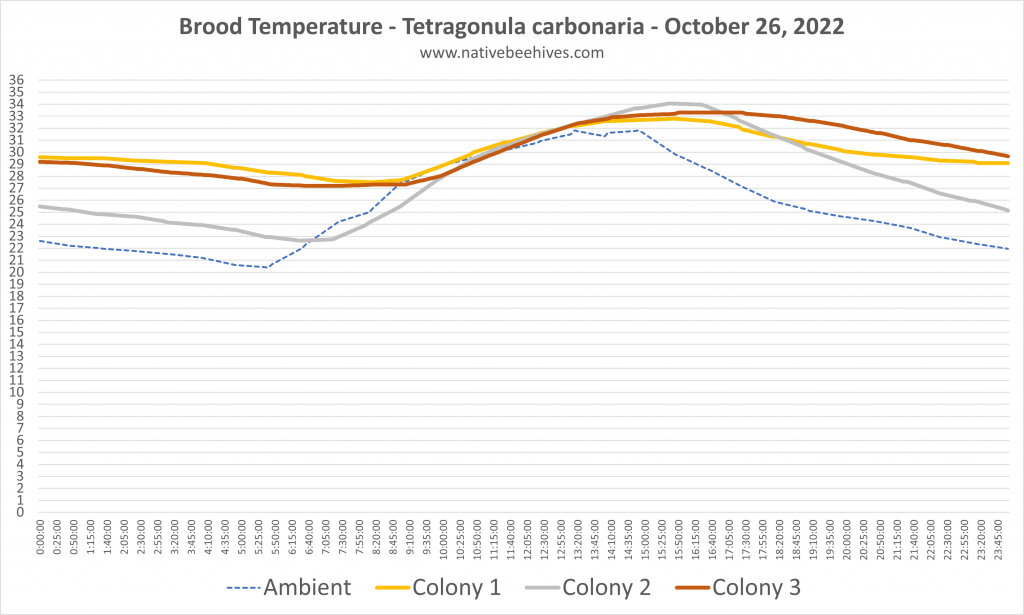

December 2022

February 2023

March 2023
Below: I opened colony 2 (the grey line) and moved the sensor in to the brood area. It now looks similar to the others.

April 2023
Below: Looks like Colony 2 (grey) could have moved the brood away from the sensor probe towards the end of the chart. The more erratic and the more it follows the ambient temperature the more likely it’s not in the brood or is a weak colony.
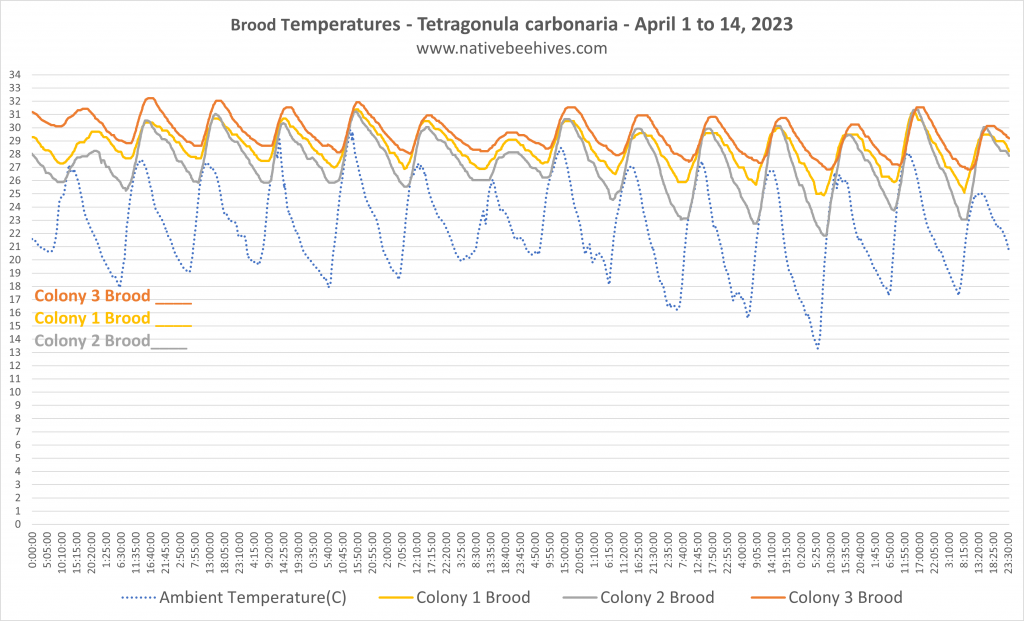
Below: 4 colonies with brood and honey pot temperatures
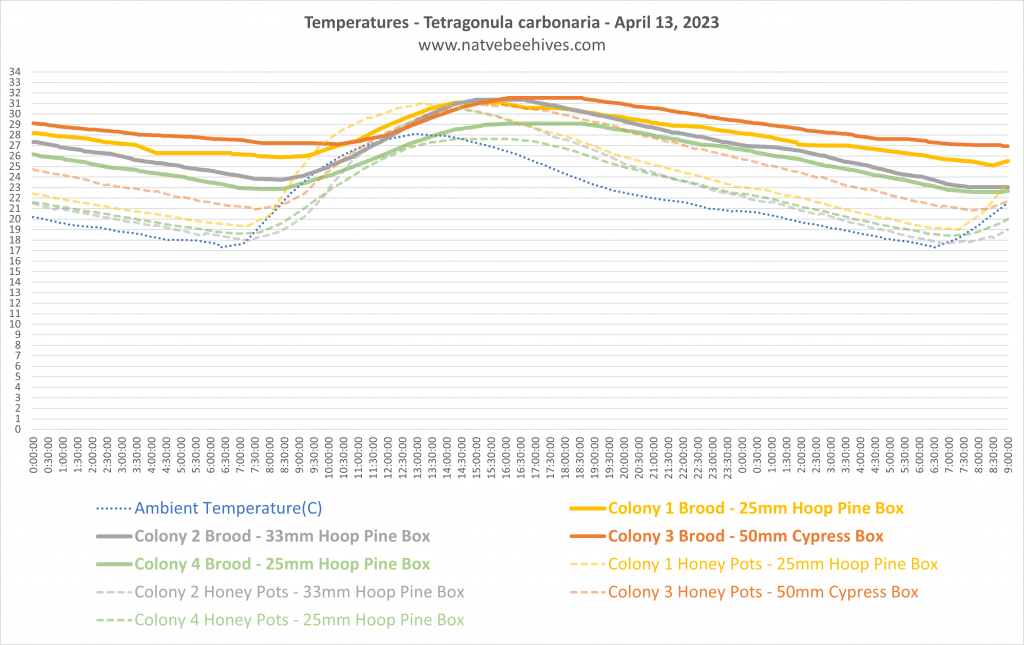
May 2023




